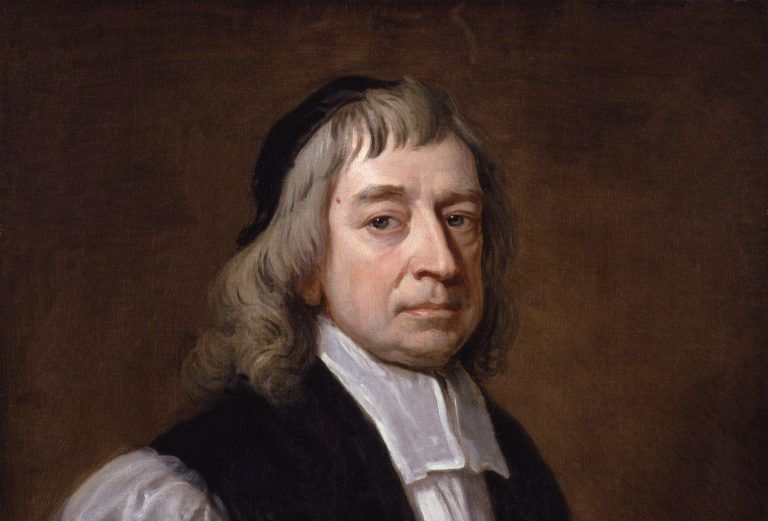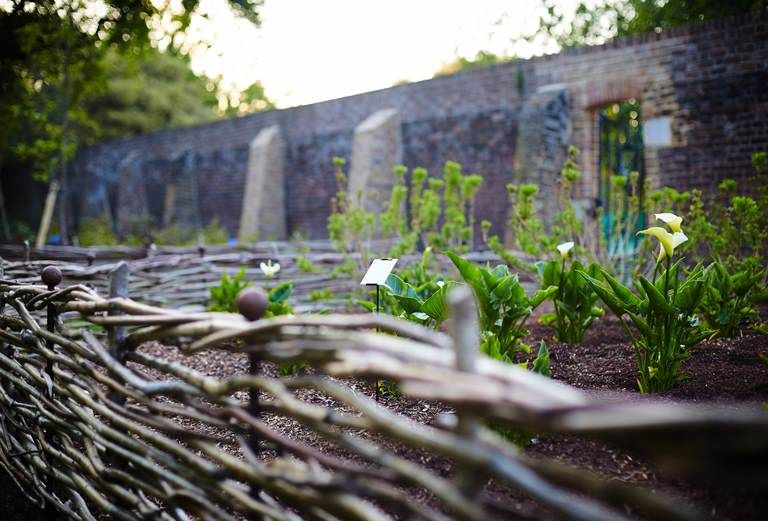
Alexis Haslam, community archaeologist
If I could identify one thing that I find particularly enjoyable about working at Fulham Palace, it is the genuine enthusiasm for the history of the place that embraces everybody; from those who work here right down to the casual drop-in visitor. I am almost always stunned however by our volunteers’ constant thirst for knowledge, their desire to identify hidden facts and to tell newly discovered stories. There is an ever present chatter around the grounds and I am asked questions on a daily basis, not all of which I can honestly answer! I certainly don’t declare to be the font of all Fulham Palace knowledge. My head is full of enough junk as it is!
This does bring me to this latest blog though, which all began with a conversation with garden volunteer and all round Compton king / horticultural quizmaster general, Jamie Atwell. He was keen to know whether or not Lancelot Capability Brown had been involved in any way at Fulham Palace, possibly in discussing the walled garden development with Bishop Terrick. Now, I couldn’t find a definitive answer to this query, but I did discover that Lancelot was rather partial to hanging out at a nursery in Fulham owned by a certain Christopher Gray. ‘Who was he?’ I hear you ask. Well, according to Jane Brown in her book The Omnipotent Magician, Mr Gray had permission, presumably from the resident Bishops, to propagate from the American plants growing at Fulham Palace. Say what?! Yes, that’s right, he was allowed to wander onto the grounds and take cuttings to grow at his nursery. Whether or not he paid for this privilege is unclear, but Lancelot was certainly fond of wandering around the Palace garden it seems, presumably in the company of Mr Gray.
So how did this all begin?
The death of Bishop Compton is generally mourned at the Palace. I’ve been here before so I don’t want to go over old ground, but the presumption has always been that his successor, John Robinson tore the garden up and sold it off, destroying and dissipating the Palace’s botanic collection. Is this true though? What really happened?

There’s no doubt that Robinson knew the collection was important and indeed valuable. It would certainly be fair to state that botany wasn’t his number one passion. He was more of a writer and a keen Scandophile having spent rather a lot of time in Sweden on diplomatic duty. So what did he do with all those wonderful specimens? Who did he sell them to?
Believe it or not there is actually a record of this. According to Faulkner, in his book A Historical and Topographical Account of Fulham, a great part of the collection was sold to two specific individuals; Robert Furber who ran a nursery in Kensington Gore, and the aforementioned Christopher Gray.
Furber had established his nursery in around 1710 and it remained active until c. 1837, by which time it was under the ownership of William Malcolm. The site was subsequently developed and now lies beneath De Veere Gardens and Hyde Park Gate. It is Christopher Gray that we’re going to pay a bit more attention to here though, and I’m going to rely rather heavily on a wonderful article by Kathleen Clark. Entitled What the Nurserymen did for us: The roles and influence of the nursery trade on the landscapes and gardens of the 18th century, this piece appeared in Garden History Vol 40. No. 1 (2012).
Horticulture was very much in Christopher Gray’s veins. His father William had started the nursery in Fulham on the King’s Road in about 1683 and this appears to have been on the plot of land now situated between Grimton Road and Linver Road. Christopher didn’t take over the business until 1730, yet in 1714 at only 20 years of age he purchased what he could of Compton’s collection. Presumably he was already actively involved with his father’s nursery, and it was here that he began to propagate and grow these wonderful specimens. By the 1730s Gray was claiming to cultivate ‘a greater variety of trees, shrubs, plants and flowers, than can perhaps be found in any other garden for sale, not only in England, but also in any part of Europe’. He was certainly selling plants to customers in France. His obsession with North American species is almost certain to have been influenced by the Fulham Palace collection, and in 1737 he produced a book entitled A Catalogue of American Trees and Shrubs that will Endure the Climate of England.
This early 18th century was most certainly a pivotal point in time for nurserymen. In 1714 George London died and Henry Wise retired, loosening the grip these two had maintained on the nursery trade. In 1724 Philip Miller of the Chelsea Physic Garden released The Gardeners and Florists Dictionary, or a Complete System of Horticulture, for which both Furber and Gray were both signatories.
Essentially this was a revolutionary piece of literature in the horticultural world. Whereas previously the material and the knowledge of such rare and exotic species had been held by an incredibly small group generally comprising the landed gentry, the wealthy, the high clergy in Compton’s case and a select number of Royal gardeners, Miller and his signatories were blowing this exclusive circle wide open. They wanted to help the lay gardener by providing them with the same knowledge as their employers, placing the art of gardening into their hands along with likeminded amateurs and keen enthusiasts. Acquiring Compton’s specimens also meant for the likes of Gray and Furber that they were able to provide these trees, shrubs and plants to the general population (obviously to their financial benefit).
So the next time you’re in a nursery or a garden centre, think of Bishop Robinson. He probably didn’t mean it; he is unlikely to have understood the consequences of his actions; but by selling off Compton’s garden he made it available to everyone. Sure, the Palace lost its botanic garden for approximately 300 years, but we’re getting it back now. Wasn’t this was a small price to pay for the greater good? So here’s to John Robinson. The inadvertent socialist gardener!

Join us on 12 September to hear Alexis speaking about the contrasts between community and commercial archaeology. Book your free place now.